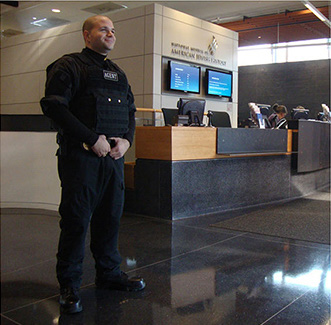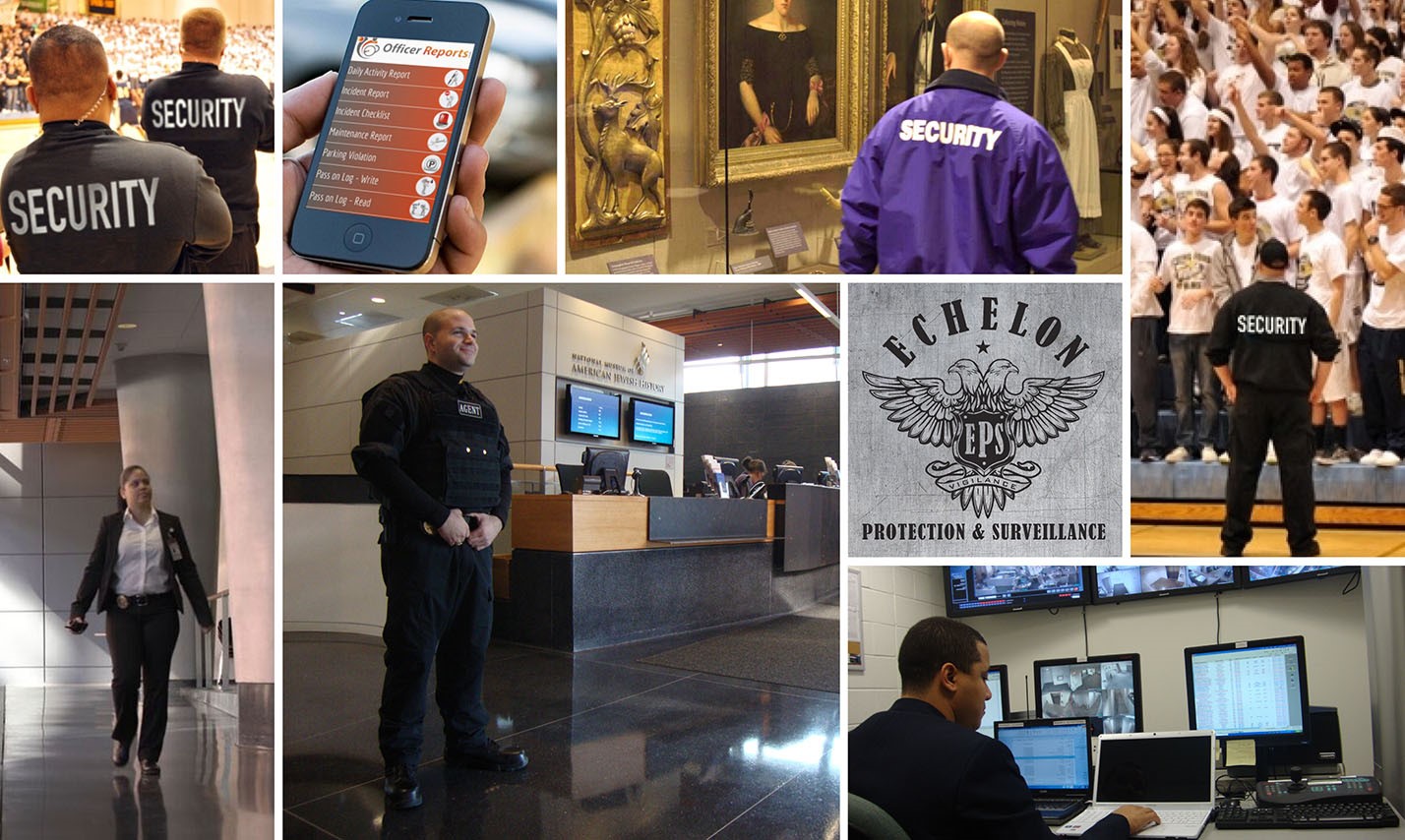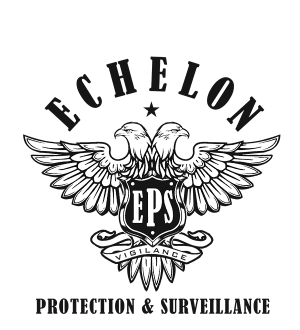
Armed Security Guards Newark DE
Unarmed Security Guards Newark DE
Your security depends upon having a well trained security guard who is vigilant, reliable, able to solve problems, and equipped with the technology and tools required to maintain your peace of mind. At Echelon Protection & Surveillance, we can develop a customized security plan that meets your needs using certified armed and unarmed Newark security guards.

- We offer flexible, cost effective security service solutions using both Newark armed security guards and/or Newark unarmed security guards
- All of our security guards are well-trained and highly visible problem solvers that will work in any industry
- You can try our security service for a day and experience first-hand our professionalism and overall value
We also ensure that our security guards are equipped with the equipment they need to realize your unique security protocols.
Newark Unarmed Security Guards From education facilities to personal protection, there are a number of situations where Newark unarmed security guards are required. We offer quick, affordable, and reliable solutions for any situation requiring highly-trained Newark unarmed security guards.
Newark Armed Security Guards The volatile nature of our modern world sometimes demands Newark armed security guards to ensure the safety and protection of both people and property. Our Newark armed security guards are trained by law enforcement experts, which makes them ideally suited for situations requiring immediate response.
We can customize a security solution for you All of our security guards hold Clearances and Certifications that include:
- Act235 Armed
- CPR/First Aid
- AED
- Evacuation Coordination
- Management of Aggressive Behavior
- Package Inspection
- Magnetometers
Contact Echelon Protection & Surveillance and let us help you develop a security plan focused on meeting your specific needs with both unarmed and armed Newark security guards you can implicitly trust.

Newark Tidbits
Not much is known about the original settlement of Newark, Delaware. Much the same as most settlements in Colonial America, Newark had a significant number of natural features and location. During the early 1700's, the small Welsh, Scotch-Irish, and English settlement grew next to two old Indian trails and the fall line where the White Clay and Christina Creeks turn sharply eastward towards the Delaware River. Eventually, the region started to serve travelers who were on route from colonial Philadelphia, Maryland, Virginia, and the Chesapeake Bay.Also, the streams flowed with enough speed to power the sawmills and gristmills that were soon located on their banks. Rich soil meant that vegetables, corn, and wheat were plentiful, and the forges of a small country iron works was fed from the available ore from the close by Iron Hill. It wasn't long before a brickyard and a tannery were established in the settlement. The country crossroads and bustling local market received recognition from a Charter from King George II, and Newark was officially established in 1758.
During the late 1700's and the early 1800's while the history of the settlement the Middle Atlantic area developed a pattern of trade based on agriculture combined with the water and steam powered industry, Newark departed from the tradition as its main reason for future growth came from the largest property in the city, which was a local private academy named the University of Delaware.
A small grammar and preparatory school had relocated to Newark from New London, Pennsylvania in 1765. The school became the Newark Academy, which thrived during the years before the American Revolution. At that time Newark was described at the time as healthy and suitable settlement, which wasn't too luxurious or rich. It was a school where real learning would be obtained. However, during the war the academy was closed and its funds were taken by the British.
The academy was reborn after the American Revolution. The settlement began to grow slowly. Recognizing In 1833, Delaware State granted a charter for a new institution in the community named Newark College, but the name was later changed to Delaware College. The college merged with the academy the following year and shortly thereafter the preparatory and grammar part of the school was closed.
In 1858, the college also closed due to the coming of the Civil War and a student uprising. The Women's College, which is linked administratively and located next to the male school opened its doors in 1914. However, it wasn't until 1944 that the two institutions were officially combined until 1944. In1921, before that the male college received a new name and a revised state charter. The name was the University of Delaware.
Meanwhile, the settlement of Newark had become a small community around the local crossroads and college market. In 1837, the Baltimore, Wilmington and Philadelphia railroad which sometime later came to be known as the Pennsylvania Railroad and is currently known as the Northeast Corridor Amtrak/Conrail, which linked Newark to points west and north. The first bank in the community was established in 1855. The Ohio and Baltimore Railroad, which was the predecessor of the modern CSX railroad system arrived in 1886 and provided additional freight railroad service and passenger service to Philadelphia and points south and west. Throughout the 1920's, the population of the community increased dramatically and a substantial retail market was established in conjunction with industrial and university expansion.
Delaware State granted a new charter that coincided with the arrival of Chrysler, that doubled the size of the community. Prior to the change to the City Charter, Newark had encompassed a region that was approximately bounded by the White Clay Creek and what is currently known as the north campus of the University on the north, and the Newark Country Club and the estimated location of Beverly and Old Barksdale Roads on the west, the Pennsylvania Railroad on the south, and the current location of Library Avenue on the east.
The new Charter in 1951 Charter caused the basic outline of Newark. Delaware State granted the current Charter to Newark, in 1965, which strengthened the Council-Manager form of government significantly.
>From the 1950's through the 1960's, the development pattern in Newark closely followed the national economic boom after the war. For Newark this meant that the population increased to nearly 21,000 people in 1970 from just over 11,000 people in 1960. In the history of Newark, this was the fastest growing decade by far. Excellent housing was provided by new residential land tracts and expanded the boundaries of Newark to include subdivisions such as Paper Mill Farms, Elan, Williamsburg Village, Westfield and Arbour Park. Also, during this same period of time, the Diamond State Industrial Park was annexed, which provided the current home for Hass and Rohm, New London Textile, and DuPont as well as nationally known companies.
Throughout the late 1970's and the early 1980's, the growth in Newark stabilized as the regional and national economy suffered from the shock of oil prices. However, in the late 1980's, the pace of development in Newark increased dramatically with the completion of the Barksdale Estates and Stafford communities. The approval of the residential developments of West branch, Christianstead, Country Place, and Abbotsford as well as the Sandy Brae Industrial Park, among others.



